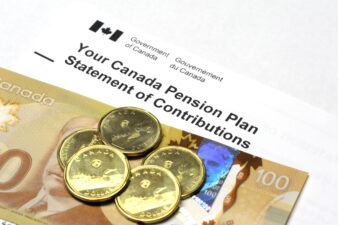The Canadian housing market is going through a rapid “slowdown” phase. One of the most expensive markets in Canada (Oakville) has seen a decline equivalent to over $2,200 a day from its peak. Toronto home prices have fallen (on average) over $130,000 since their peak.
Even though the decline of the housing market as a whole shouldn’t be gauged through the hottest individual markets, it’s a good representation of the pace at which the housing market is falling on a global scale. Experts at Goldman are predicting that Canada’s housing market will experience the sharpest fall among all the global real estate markets that are sliding down right now.
A positive perspective on the current situation would be that the housing “balloon” has been punctured and is losing air at a rapid pace. A more pessimistic outlook would be that the bubble, instead of shrinking, is finally bursting, and now investors and homeowners will suffer the consequences.
In a market like this, even if you are not planning to buy real estate assets or stocks, you should keep track of some of them and try to buy when the recovery finally starts.
A residential REIT
Canadian Apartment Properties REIT (TSX:CAR.UN) is one of the largest REITs in Canada. It has an impressive portfolio of 67,182 residential suites, most of which are from apartment properties and about 5% from mobile home communities. A sizeable portion of the portfolio is in the Netherlands, and this geographic diversification is a major strength of this residential REIT.
Even though it’s a residential REIT and may experience a harder impact from the housing market decline compared to commercial REITs, it might not be as bad as you might think. Even if the company experiences a devaluation of its residential assets, its finances rely upon rent.
And as long as the rents don’t see a decline proportional to the property prices, there might not be a significant enough dip in the REIT’s earnings.
Still, the REIT has fallen quite a bit (about 29%) along with the rest of the sector, and it might go down further, which would allow investors to lock down a much more impressive yield than it usually offers.
A property management and essential services company
If you are looking for a relatively safer real estate stock in the current environment, FirstService (TSX:FSV)(NASDAQ:FSV) is a strong candidate. It’s the largest residential community and management services provider in the U.S.
The bulk of its revenue (about 87%) comes from the U.S., so even if the Canadian business sees a substantial decline, its impact on the overall financials would not be as drastic. And the U.S. housing market isn’t as shaky as the Canadian one right now.
Another point in FirstService’s favour is that it has already gone through a correction phase. The stock fell 36% from its post-pandemic peak, which almost negated all the growth it had accumulated since the 2020 crash. Now, the stock is reasonably overvalued and ready to start growing at its former pace, which is quite exceptional.
It’s already recovering, and if the current growth phase remains contrarian to the Canadian real estate sector for a week or two, the smart thing to do might be to buy before it becomes too expensive.
Foolish takeaway
Real estate investing in Canada will most likely slow down for the next few months. An investor pullback might be good news for homebuyers, but the rising interest rates might prevent many of them from joining the market.







